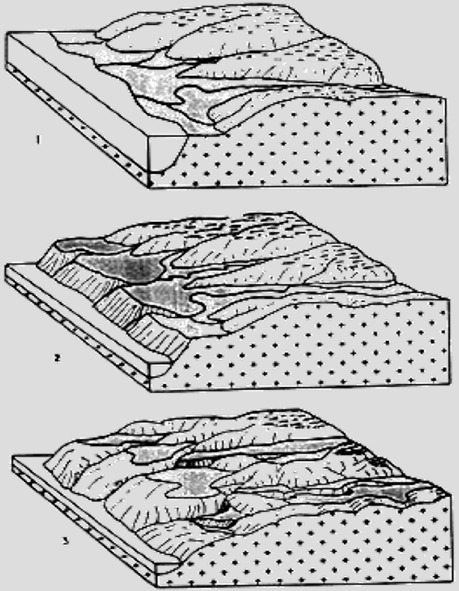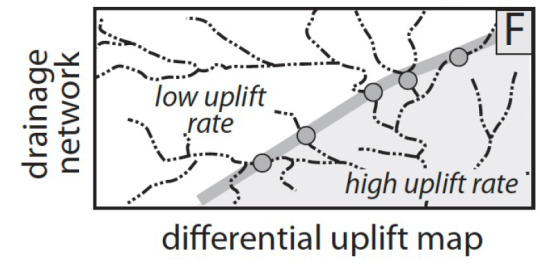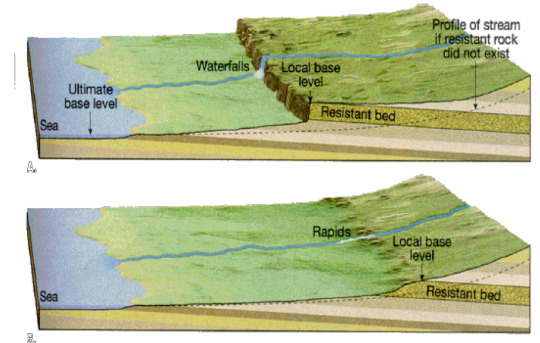#this one was kinda dumb lol sorry but this exact topic kicked my ass yesterday
Explore tagged Tumblr posts
Text
Knickpoints, base level, and waterfalls
I won't go into detail about hydraulics, but hi! Let's talk about rivers a little!
Base level: in geomorphology, the "base level" is the lowest point at which erosion can occur, or in the case of rivers, it's the lowest altitude at which a river can flow. A common base level for most rivers is the sea, though for some of them it might be a lake, a different river that the first river is a tributary to, or a dam.
The base level for any given river can change through time, since sea levels can vary, dams can be built, etc. A variation in base level, causes a variation in the river's energy, which can lead to more erosion, or more sediment deposition depending on if the river has more or less energy than before.
Here are two examples, the first is of a river whose base level dropped lower, it gained more energy and started eroding the substrate more, the second one is of a river whose base level was raised higher, and it started depositing more sediment to compensare with lowered energy.


This was an introduction to explain the concept of base level, now let's move on to knickpoints.
Knickpoint: a sudden and sharp variation of a river's slope, often leading to the formation of waterfalls and/or lakes. Some reasons why a knickpoint might form are: base level drop, tectonic activity, or a later of erosionally resistant rock:

There are generally two types of knickpoints: migrating and fixed.
Migrating knickpoints are mainly caused by base level drop and tectonic activity. They are called migrating because due to the erosion that the river applies on the substrate, the knickpoint is able to travel upstream. In the case of a base level drop type of knickpoint that affects an entire hydrography basins, usually the baisin will have all of its migrating knickpoints at the same altitude:

Sometimes, knickpoints are caused by differential uplift (two areas within a hydrographic basin are subject to different rates of tectonic uplift), and this causes a "barrier" of knickpoints that can easily be drawn within the baisin:

Fixed knickpoints instead are caused mostly by the presence of a layer of erosionally resistant rock, as it is something that the river cannot easily erode through, and will remain fixed.

Waterfalls can form from any of these kinds of knickpoints, it really depends on the river's erosion ability, it's energy, it's mass flow rate, the kind of sediments it carries, etc.

#geomorphology#original post#geology#this one was kinda dumb lol sorry but this exact topic kicked my ass yesterday
45 notes
·
View notes